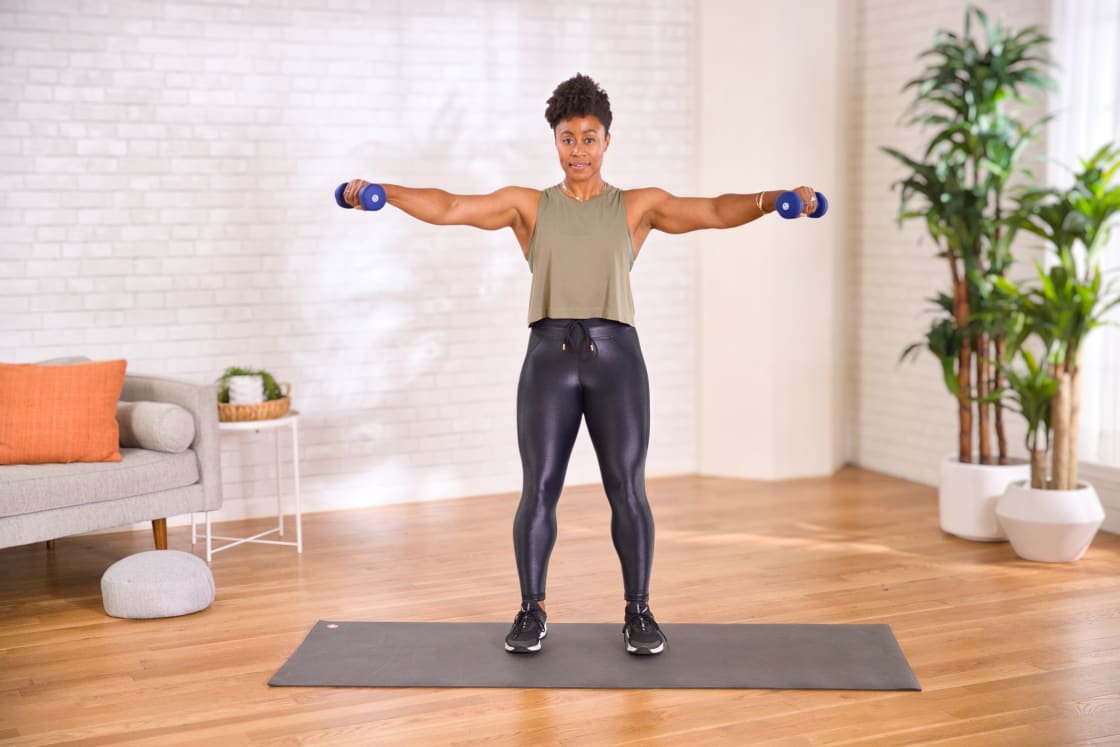One Simple (But Super Effective) Exercise For Majorly Toned Arms
You won't want to miss out on lateral rises if you're searching for a quick way to work your arms—and especially your shoulders. While it may appear to be a basic move, it will train your deltoids like no other.
BB Arrington, CPT, a personal trainer and holistic nutritionist, demonstrates how to do lateral raises properly, as well as advice, adaptations, and the advantages of this technique.
How to do lateral rises are as follows:
raise on the side
Image courtesy of mbg creative
Take a set of weights with you (lighter is ideal for this move). Standing with your hands facing in and your feet beneath your shoulders, come to a standing position. Knees should be softer. Your shoulders should be rolled down.
Raise your arms in front of you to create the letter "V." Lower yourself for three counts.
That counts as one rep. Complete 10 of the tasks.
Modifications and suggestions:
Avoid locking your elbows to ensure that you're using the right muscles and not putting too much strain on your joints.
Keep the weight small if you're attempting lateral raises for the first time to avoid injury. As you gain strength, you can gradually raise the weight to provide your muscles a greater challenge.
Slow down to make lateral lifts more difficult without altering the weight. Raise the dumbbells for 2 to 3 seconds, hold for a few seconds at the peak, and then drop for up to 6 seconds.
If you notice that one side of your body is stronger than the other, attempt one-sided lateral rises to ensure that both sides are challenged.
Maintain proper form by keeping your core and back in place. This entails keeping your core engaged and your shoulder blades down and back. Your upper body should not rock back and forth when performing the maneuver correctly.
What are the advantages?
This is, first and foremost, a technique that focuses on the shoulders, specifically the deltoid muscles. The anterior deltoid, lateral deltoid, and posterior deltoid are the three portions of your deltoids, which are triangular-shaped muscles that surround the shoulder.
This technique not only works your delts, but it also improves shoulder mobility because of the strength it produces. You're also training your abdominal muscles when you do lateral raises properly (i.e., maintain the core stable and engaged).
So take your dumbbells and attempt lateral rises the next time arm day comes around and you're looking to work those shoulders.
Do you want to make a difference in the world with your passion for wellness? Become a Coach in Functional Nutrition! Join our upcoming live office hours by enrolling today.

